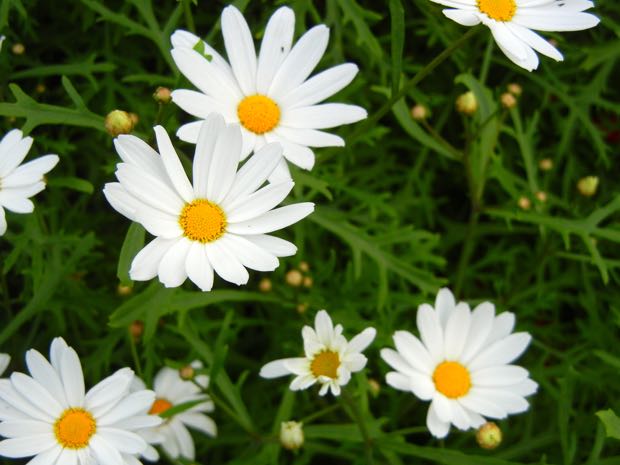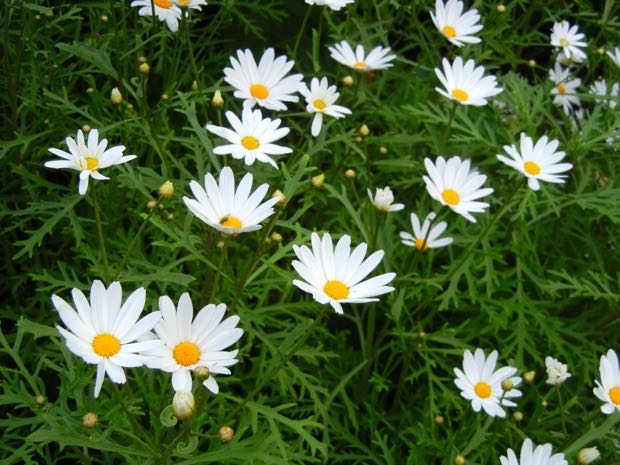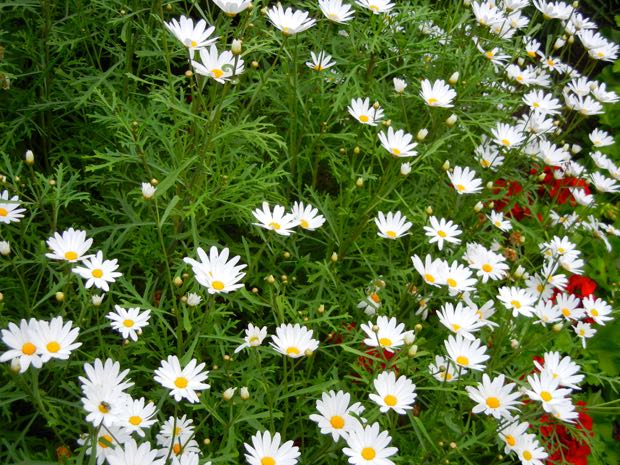Argyranthemum frutescens subsp. canariae: Embracing the Beauty of Canary Marguerite
Background and Characteristics: Argyranthemum frutescens subsp. canariae, commonly known as Canary Marguerite or Paris Daisy, is an evergreen sub-shrub and a member of the Asteraceae family. This perennial plant is characterized by its long flowering period and compact growth, reaching a height of approximately 60 cm (2 ft). The flowers of Argyranthemum frutescens subsp. canariae open their white petals in the morning and close them at night, adding a charming touch to any landscape.
Origin and Publication: Argyranthemum frutescens subsp. canariae is native to the Canary Islands. It was first described and named validly by Carl Linnaeus, a renowned Swedish botanist, in his work. However, the species was later revised and reclassified by Carl Heinrich ‘Bipontinus’ Schultz in 1844, providing further insights into its taxonomy and classification. The recognition and documentation of Argyranthemum frutescens subsp. canariae has played a crucial role in understanding its botanical significance and contributing to its popularity among gardeners and enthusiasts.
Description and Habitat: Argyranthemum frutescens subsp. canariae typically grows in a bushy form with branching stems and bluish-green lanceolate or oval leaves. The daisy-like flowers display a pristine white color with a vibrant yellow center. This species thrives in sunny positions and prefers moderately fertile, well-drained soil. While it can tolerate some shade, full sun exposure is ideal for abundant flowering. With its attractive appearance and adaptability, Argyranthemum frutescens subsp. canariae is a popular choice for gardens and landscapes.
Cultivation of Argyranthemum frutescens subsp. canariae:
Sunlight: Argyranthemum frutescens subsp. canariae flourishes in full sun exposure, although it can tolerate some shade. To ensure optimal flowering, it is recommended to provide this plant with at least 6 hours of direct sunlight per day.
Watering: Regular watering is essential, especially during the first year after planting. Water deeply once a week, or more frequently during hot and dry weather. Once established, Argyranthemum frutescens subsp. canariae becomes more drought-tolerant but will still benefit from occasional watering during prolonged dry spells.
Soil and Fertilizing: This plant thrives in well-drained soil with a slightly alkaline pH ranging from 7.0 to 7.5. Prior to planting, amend the soil with compost or well-rotted manure to enhance its fertility and drainage capabilities. While Argyranthemum frutescens subsp. canariae does not require excessive fertilization, a light application of balanced fertilizer in the spring can promote vigorous growth and abundant flowering.
Pest and Disease Resistance: Argyranthemum frutescens subsp. canariae exhibits good resistance to common pests and diseases. However, it may be susceptible to aphids, which can cause damage to the leaves. If aphids are detected, they can be removed by washing the leaves with soapy water or treated with an appropriate insecticidal soap following the instructions on the label. Regular monitoring is recommended to address any pest or disease issues promptly.
Propagation Methods:
Argyranthemum frutescens subsp. canariae can be propagated through both seeds and cutting methods. Cuttings are the most common and successful approach. Take 4-6 inch cuttings from non-flowering stems and remove the lower leaves. Dip the cut end in rooting hormone and plant it in a pot filled with moist potting mix. Keep the cutting in a warm and bright location, ensuring the potting mix remains consistently moist. Roots should develop within 2-4 weeks, indicating successful propagation.
By following the recommended cultivation practices and providing the appropriate growing conditions, individuals can enjoy the beauty of Canary Marguerite (Argyranthemum frutescens subsp. canariae) in their gardens and landscapes. With its charming white flowers and adaptability to various environments, this perennial plant adds a touch of elegance and vibrancy to any outdoor space.






